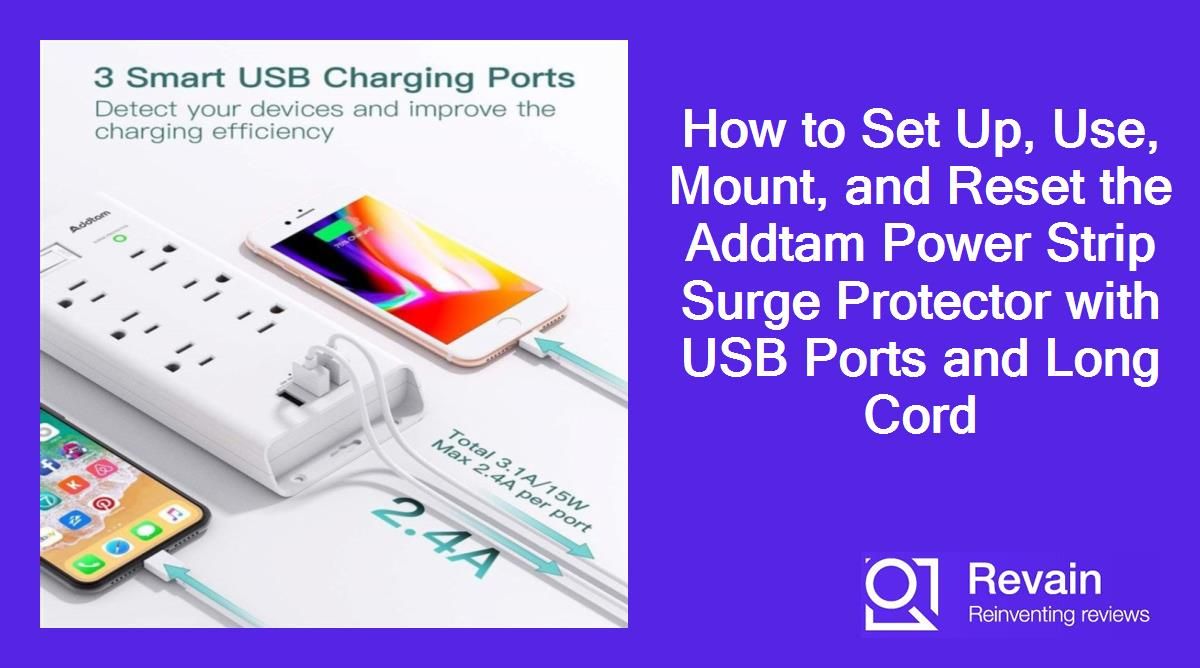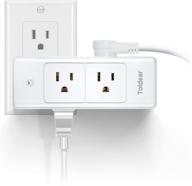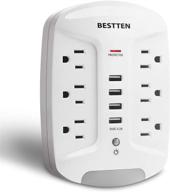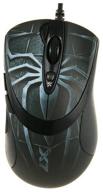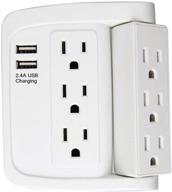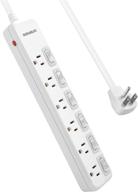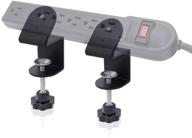Top products in 🔌 Power Strips
How to set up the power strip?
Setting up the Addtam power strip is a quick and easy process. Here are the steps to get your power strip up and running:
1. Choose a location
First, decide where you want to place the power strip. It should be near an electrical outlet and in a spot that's easily accessible. Some good options are under a desk, along a wall, or behind furniture. Make sure the location doesn't create a tripping hazard.
2. Plug it in
Plug the power strip directly into a wall outlet. Do not use an extension cord as this can cause overheating. The power strip has a 5 foot long cord so it can reach most outlets. Be sure to completely insert the plug.
3. Check the power switch
There is a small power switch located on the side of the power strip. Make sure this switch is in the ON position so power can flow to the outlets.
Another interesting products
4. Connect devices
You can now plug devices into the power strip's outlets. Plug in essential electronics first like your computer, monitor, router, etc. Then add peripherals like printers, phone chargers, lamps, and more. Be careful not to overload the power strip.
5. Use the USB ports
For convenient USB charging, just plug your devices' USB cables into the power strip's 3 USB ports. These ports work great for phones, tablets, and other items that charge via USB.
That covers the basic setup! Keep the power strip in an open, ventilated area and don't daisy chain multiple strips. With those tips, you'll safely install and enjoy your new Addtam power strip.
How to use the USB ports?
The Addtam power strip has 3 convenient USB ports for charging your USB-powered devices. Here is how to make the most of these ports:
Choose the right port
The power strip has the following USB ports:
- 1 USB-C PD port
- 2 USB-A ports
Use the USB-C PD port for higher power delivery up to 60W. It's ideal for larger devices like laptops, tablets, and battery packs. The two USB-A ports provide standard 5V/2.4A output for phones, Bluetooth speakers, and other accessories.
Plug in your device
Insert your device's USB charging cable into one of the available ports. The ports are spaced far enough apart to allow large power adapters. Push the cable in firmly to ensure a secure connection.
Check the indicator light
There is a small LED light above each USB port. When lit, this indicates that the port is actively charging a device. If the light is off, there is no connection.
Monitor charging speed
Charging speed depends on the device and wall outlet amperage. The USB-C PD port supports up to 60W charging if using a compatible adapter. For optimal performance, plug the power strip directly into a wall outlet rather than an extension cord.
Avoid overloading
Do not exceed the total output of the USB ports which is 60W combined. Try not to use high-powered devices like hair dryers, fans, or mini-fridges on the power strip when also utilizing the USB ports.
Following these tips will allow you to safely charge up to 3 devices at once using the convenient USB ports on the Addtam power strip.
Similar products
How to mount the power strip to the wall?
The Addtam power strip can be mounted to the wall for a cleaner, organized look. Here are some tips for installing it properly:
Materials Needed
- Addtam power strip
- 2 screws appropriate for your wall type
- Electric drill
- Screwdriver
- Measuring tape
- Pencil
Pick a Location
Decide where you want to mount the power strip. Consider proximity to outlets and how much cord length you'll need. Measure to find the ideal height to suit your space.
Mark the Screw Holes
Use a pencil to mark the positions for the 2 mounting screws. Place them 3.25 inches apart in line with the power strip's built-in mounting slots on the backside.
Install the Screws
Using your electric drill, carefully drill pilot holes (if needed) and install the screws into the wall. Leave about 1/4 inch of each screw protruding.
Mount the Power Strip
Align the power strip's mounting slots with the 2 screws and slide the power strip downwards until it locks into place. The screws should fit snugly into the slots.
Check Fit and Adjust
Verify that the power strip feels securely mounted to the wall. If needed, adjust the screws to sit perfectly flush within the mounting slots.
Be sure to keep the power strip's vents clear from obstructions for airflow. Now you can safely enjoy a wall-mounted power strip that maximizes organization and space!
How to reset the surge protector?
The Addtam power strip has a built-in surge protector that helps safeguard your connected devices. If it's been tripped, you'll need to reset it to restore power flow. Here's how:
Check the Protection Indicator
There is a protection indicator light on the power strip. If it is not illuminated, the surge protector has been tripped and needs a reset.
Unplug Devices
Unplug all connected devices from the power strip. This clears any excess load that may be preventing a reset.
Disconnect Power
Unplug the power strip from the electrical outlet. This will cut power to the strip completely.
Press Reset Button
On the end of the power strip is a small reset button. Press and hold this button for 3-5 seconds using a pen or paperclip.
Plug It Back In
With the reset button held, plug the power strip back into the wall outlet. Release the reset button.
Check Indicator Light
The protection indicator should now be illuminated, showing the surge protector has been successfully reset.
Reconnect Devices
You can plug your devices back into the power strip outlets and resume normal operation.
Resetting the surge protector restores power flow after a tripping event. Be sure to identify and resolve any issues that originally caused the trip. With a reset surge protector, the Addtam power strip will continue defending your equipment.






